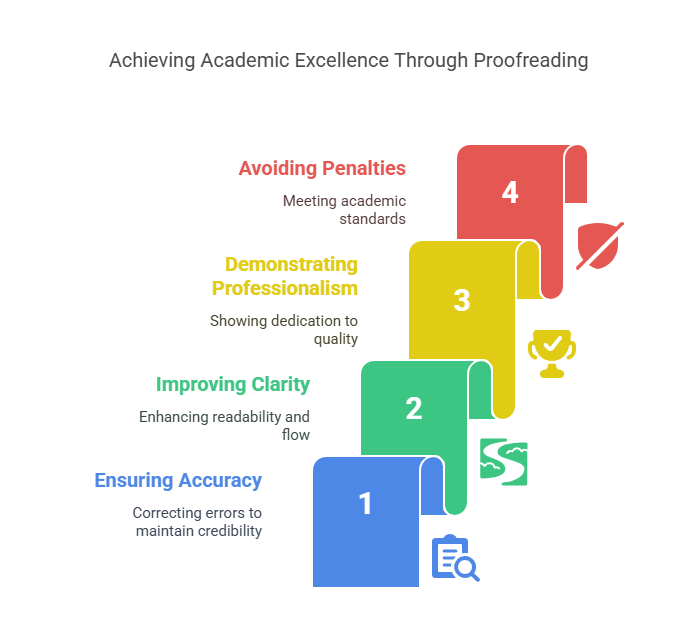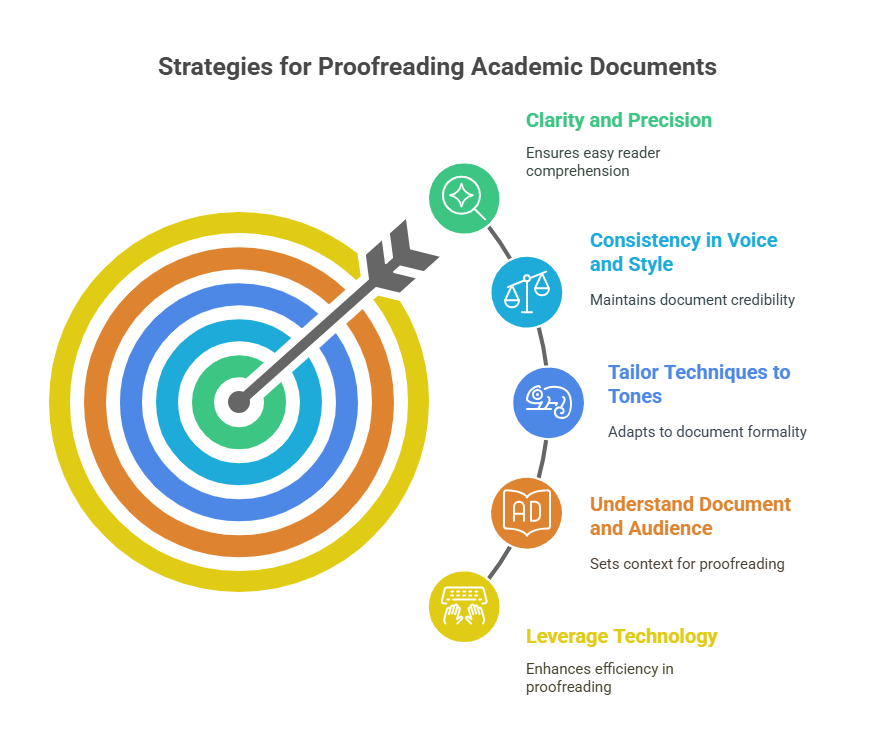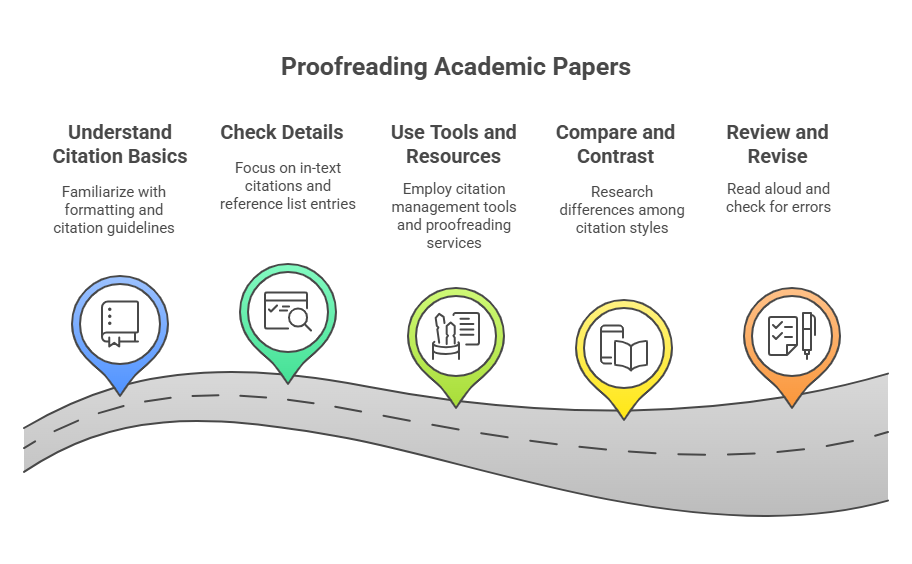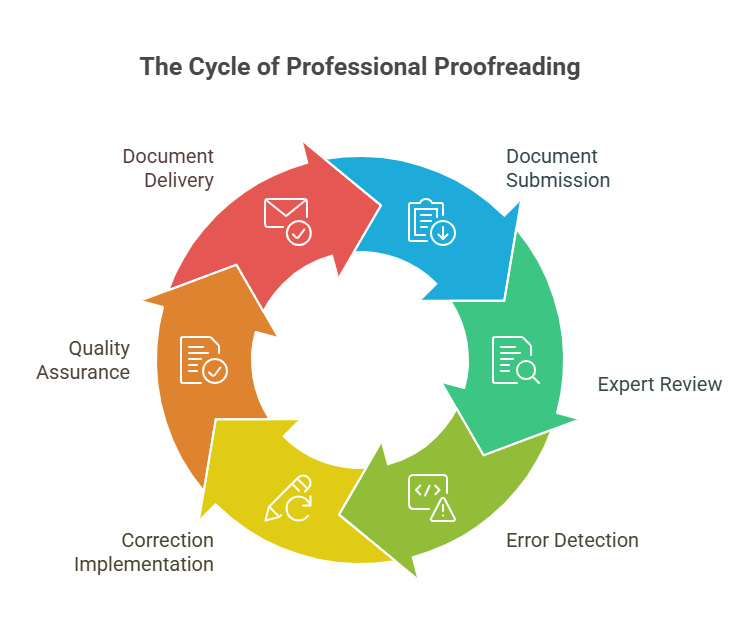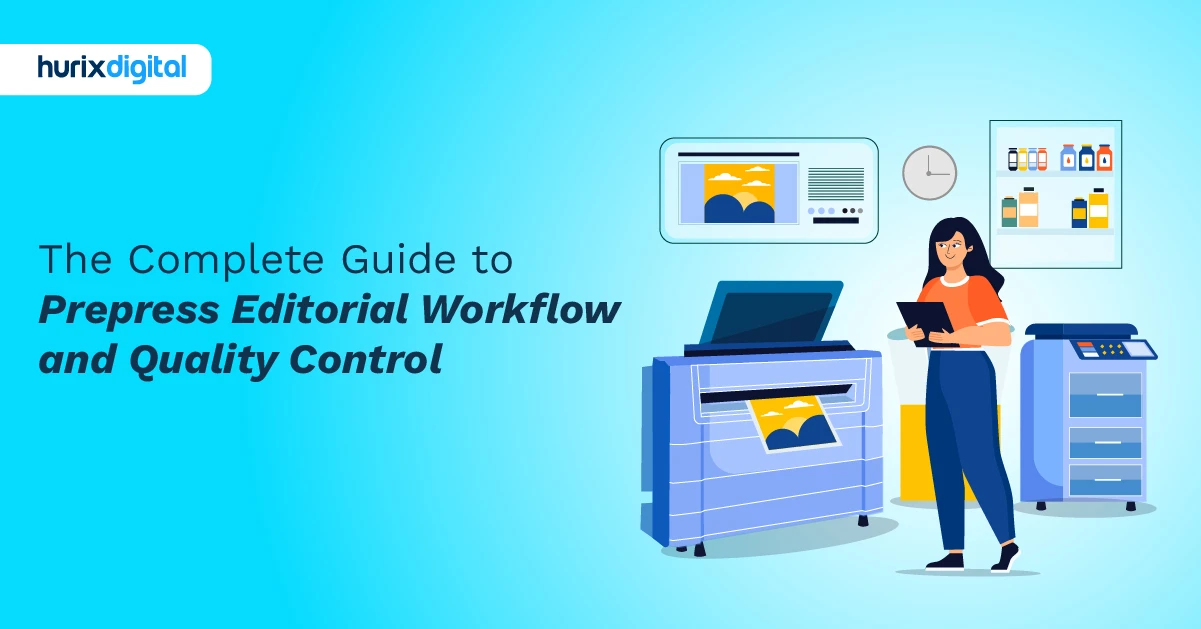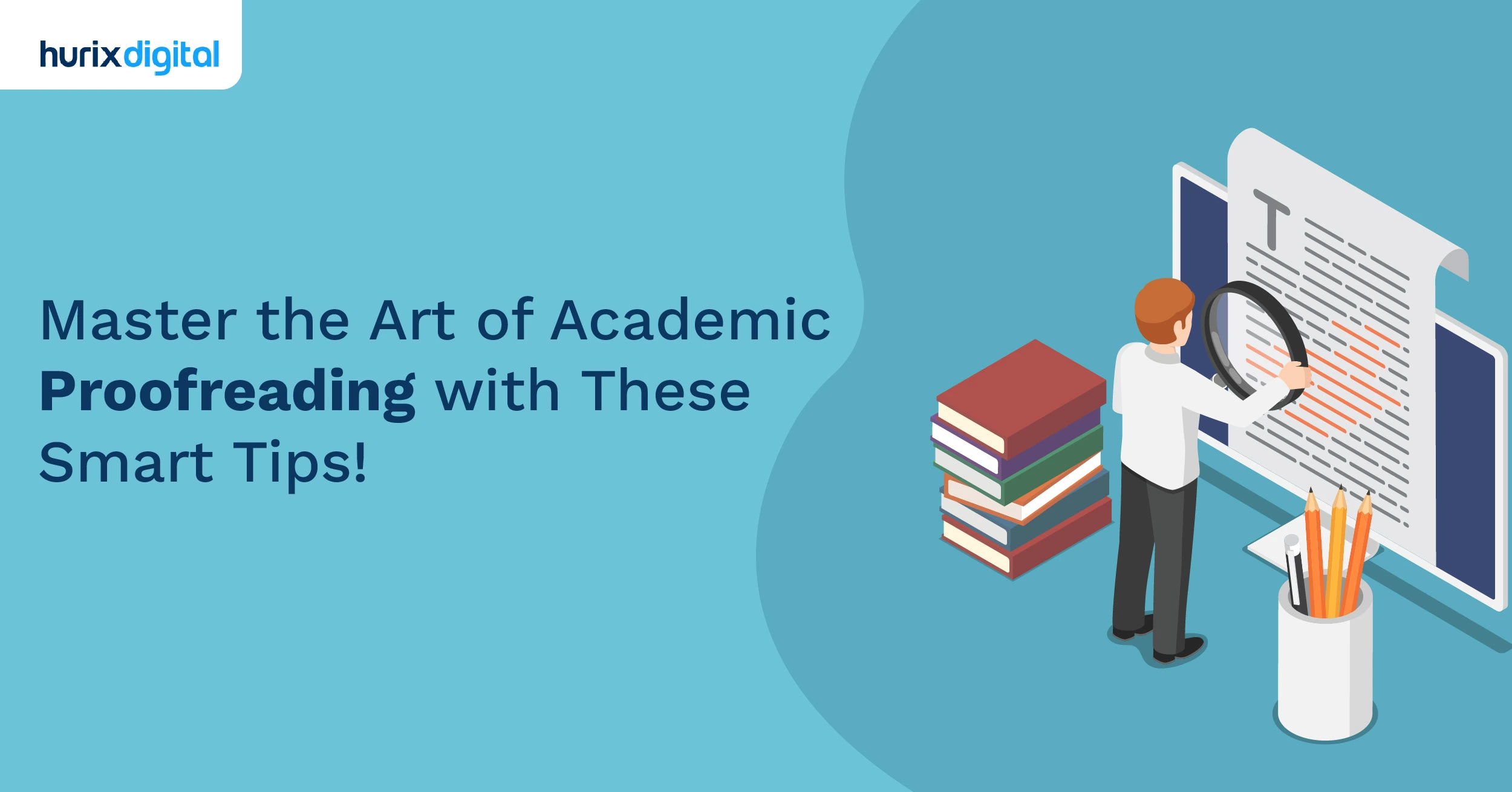
Master the Art of Academic Proofreading with These Smart Tips!
Summarize with:
There is always a need to be keen, especially when it comes to format proofing of papers to be submitted. Proofreading academic papers involves correcting spelling and grammar mistakes and making sure the format is correct, citations are correct, and the paper is coherent.
This is important for papers written according to particular citation styles, such as APA, MLA, Chicago, or Harvard. The well-structured proofreading process helps ensure that the work adheres to these standards to avoid penalty or rejection.
Here, we will discuss some useful tips on proofreading academic papers with different citation formats that will help fine-tune the overall quality of the paper.
Table of Contents:
- Importance of Proofreading in Academic Writing
- Strategies for Proofreading Varied Academic Documents
- Top 5 Tips for Proofreading Academic Papers with Various Citation Formats
- The Role of Professional Proofreading Services
- Summing Up
Importance of Proofreading in Academic Writing
Proofreading is the final step of the process of writing an academic paper and may be one of the most critical steps and should not be underestimated. Effective proofreading serves several key purposes:
1. Ensuring Accuracy
Proofreading enables one to check and correct spelling, grammar, punctuation, and citation styles that may have been missing or done inaccurately. This is very important in preserving the credibility of your academic work since the information processed needs to be accurate.
2. Improving Clarity
Proofreading provides an opportunity for the writer to review the work and correct any ambiguities in the writing. This makes it easier to read the paper and flow through each and every section of your work.
3. Demonstrating Professionalism
When you use spell check and proofread your paper, it shows that you are serious about your work. This practice demonstrates to your professor, your journal editor, or an academic committee that you care about the quality of your writing. Providing a paper free from grammatical errors reflects your dedication and professionalism.
4. Avoiding Penalties
Most of the time, academic institutions and publications have specific format and citation style requirements. If these requirements are not met, you may receive a lower grade or complete rejection of your paper.
Therefore, Proofreading academic papers is well suited for any task that involves preparing documents that must strictly adhere to certain formatting and style standards.
Considering all these implications of proofreading, an academic writer must include it in their writing process.
Strategies for Proofreading Varied Academic Documents
Whether it’s a research paper or essay, adjusting your approach to proofreading ensures clarity and adherence to academic standards. Here are five top strategies to keep in mind:
Tip 1: Understand the Document Type and Audience
Before starting the proofreading process, the type of document and target audience should be identified. Academic documents range from research papers to informal student communications. Every document has a characteristic style and tone that must be maintained while proofreading.
In proofreading academic papers, one has to ensure that the language used is formal, the arguments logically presented, and the tone objective. On the contrary, in proofreading a student newsletter, one checks whether there is more of a conversational tone where credible language is being used.
Tip 2: Tailor Proofreading Techniques to Different Tones
Proofreading techniques lend themselves to different tones. With formal documents, be they academic or research paper proofreading, one is most concerned with technical accuracy, terminology consistency, and adherence to style guidelines, such as MLA, Chicago.
By contrast, proofreading less formal documents, such as a reflective essay or a personal statement, might shift the emphasis onto the language being personally resonant with the reader, though grammatically correct and clear.
Tip 3: Maintain Consistency in Voice and Style
As in all other varieties of academic texts, constancy in voice and style is vital. An irregular tone or style could mislead readers and detract from the credibility of the document.
For example, while proofreading English academic texts, it would be important to keep the same degree of formality throughout the document constantly. Similarly, while proofreading scientific papers or medical documents, the language has to remain technical and accurate throughout.
Tip 4: Ensure Clarity and Precision in Language
In academic writing, there should be no ambiguity or imprecision. Any obscurity or ambiguities in language would have been removed when proofreading the paper so that clarity in meaning is easily accessible to the reader. This is so because proofreading scientific papers entails developing ways of communicating complicated ideas clearly and succinctly.
In addition, clarity is also significantly essential when proofreading documents with different tones. Whether the tone is formal or informal, it has to be clear and precise, with no use of jargon, unless, of course, the type of document being worked on requires this.
Tip 5: Leverage Technology in Proofreading
Technology has several tools that can be helpful in proofreading. Grammarly, Hemingway, and other software to proofread English academic text can help identify grammatical errors, check for tone consistency, and adhere to a style guide.
These tools remain valuable but do not replace the human element in proofreading. Above all, in academic practice, a professional proofreader must have irreplaceable skills in dealing with nuances, contexts, and tone.
Top 5 Tips for Proofreading Academic Papers with Various Citation Formats
Following are five effective tips for proofreading academic papers with various citation formats:
1. Know the Basics
It is very important to understand the guidelines for formatting and citing sources before proofreading an academic paper.
Before writing, familiarize yourself with the field guide and its writing format or research the key features of the most used writing formats, such as APA, MLA, and Chicago, regarding margins, document spacing, headings, and in-text citations. This step is essential in determining the best citation style for your specific field of learning.
In addition, ensure that you focus on the structure and the order of the reference list or the bibliography at the end of the paper. Make sure that you know the correct rules of capitalization, punctuation, and other things concerning each of the citation elements like the author’s name, the date of publication, page numbers, etc.
2. Check the Details
Now that you understand the necessity of citation style, it’s time to focus on the details that should be followed while completing the paper. Concentrate on each in-text citation and its related reference list entry and check whether the information provided is correct and coherent. Double-check elements like:
- Spelling and capitalization of author names
- Proper formatting of publication dates, titles, and other citation elements
- Alignment and indentation of the reference list
- Accurate page numbers or other location indicators in in-text citations
Pay special attention to any unique or complex citation types, such as those for online sources, multiple authors, or sources without clear publication information. Ensure you’re following the style guide’s specific instructions for handling these scenarios.
3. Use Tools and Resources
Proofreading academic papers with different citation styles can be a very sensitive and time-consuming process. However, many useful tools and materials, such as academic proofreading services and the best academic editing services, could help in this case.
Think about using citation management tools, such as Zotero, Mendeley, and EndNote, to generate citations faster and more accurately and format the reference list. Such tools can help avoid inconsistencies and conflicts that are normally associated with manual errors.
Further, you may consider paying for a professional proofreading service that adequately meets your needs. Skilled professional proofreaders are also capable of going through all your papers and finding out every one of the possible format or citation problems, in addition to giving customers comprehensive feedback on how to enhance the given document.
4. Compare and Contrast
It is quite common to change your citation style when writing academic papers depending on the guidelines of the journal, university, or publication you wish to submit your paper to. To help you meet these expectations, research and look for the differences that exist among the various methods of citation you may come across.
Look at practices that are common to multiple styles, like author-date or author-number systems, punctuation usage, and formatting of online sources. Furthermore, pay attention to the specificity of the target publication or institution, which may have its own changes to the mentioned guidelines, such as the use of a certain edition of the style guide or the inclusion of DOIs or URLs.
5. Review and Revise
The last part of proofreading your academic paper is reviewing the work done and determining whether it needs to be revised. Some final things to check include reading through your document aloud, completing any other formatting and citation requirements checks with a checklist, and considering having another set of fresh eyes review your work with a colleague or professional proofreader.
When reading through your paper, look at the areas where you might have found it challenging when it comes to citation style or formatting rules. Review the paper for any omissions and errors, and ensure that all sources utilized within your work have been cited appropriately.
Although proofreading is a rather time-consuming process, it is crucial to perform it to guarantee the quality of the academic paper as well as its compliance with the academic standards.
With the help of these tips and the choice of proper tools and materials, you should be able to develop the necessary skills to provide the best proofreading for your papers and ensure your readers have a great impression.
The Role of Professional Proofreading Services
With so many kinds of documents issued in every educational institution, professional proofreading services help ensure quality. Whether it’s research papers or academic proofreading services, these firms boast many experts who deal with different types of documents and shades of tone.
Professional proofreaders can find subtle errors and inconsistencies that may have easily passed automated tools or inexperienced proofreaders. They bring a deep level of experience regarding academic standards and can ensure that documents meet the standards and convey the intended meaning effectively.
Summing Up
When proofreading academic papers, it is essential to maintain a formal and critical tone. This ensures the document upholds clarity, precision, and adherence to academic standards.
In contrast, proofreading student newsletters requires a more light-hearted tone while still ensuring accuracy. Balancing an engaging style with attention to detail helps maintain appropriateness for the audience.
Quality at Hurix Digital is not just an important consideration but is more of an essential ingredient for academic writing. Our academic proofreading services enable educational institutions to equip themselves with excellence in all their written communications. Every document, from research papers to students’ essays, should leave your readers in awe of the polish and finish.
Connect with Hurix Digital today to know how we can help you!
Summarize with:

Vice President – Content Transformation at HurixDigital, based in Chennai. With nearly 20 years in digital content, he leads large-scale transformation and accessibility initiatives. A frequent presenter (e.g., London Book Fair 2025), Gokulnath drives AI-powered publishing solutions and inclusive content strategies for global clients
 Upcoming Masterclass | Build an Army of Brand Evangelists using Training & Development | November 20th, 8:30 AM PDT | 11:30 AM EDT | 10:00 PM IST
Upcoming Masterclass | Build an Army of Brand Evangelists using Training & Development | November 20th, 8:30 AM PDT | 11:30 AM EDT | 10:00 PM IST

